Nestled in the heart of the Balkan Peninsula, Macedonia is a land brimming with historical wonders, natural beauty, and cultural richness.
This article takes you on a journey through the major towns of Macedonia, each offering unique experiences showcasing the country’s diverse heritage and landscapes.
From the bustling bazaars and historical monuments of Skopje to the serene beauty of Ohrid Lake, you’ll find Macedonia is not just a destination to visit but a place to experience, offering a blend of history, nature, and culture.
Here are 23 amazing attractions in Skopje, Ohrid, Bitola, Prilep, Kumanovo, and Struga, each with its own story to tell and wonders to reveal.

Skopje

Old Bazaar:
Skopje’s Old Bazaar is a historical jewel, reflecting the city’s Ottoman past.
It’s a maze of narrow streets filled with shops selling everything from traditional Macedonian crafts to jewelry, textiles, and spices.
The area is also home to several historic mosques and hammams (Turkish baths), illustrating the rich cultural tapestry of the region.
The Old Bazaar is not just a place for shopping; it’s a vibrant part of the city where you can experience the local lifestyle, taste traditional foods, and enjoy tea or Turkish coffee in quaint cafes.
Stone Bridge:
This iconic bridge spans the Vardar River and is a symbol of Skopje.
Built in the 15th century by the Ottomans, it connects Macedonia Square, the heart of the city, with the Old Bazaar.
The Stone Bridge is not only an important historical structure but also offers picturesque views of the river and the surrounding cityscape.
Matka Canyon:
Just a short drive from Skopje, Matka Canyon is a haven for nature lovers and adventurers.
The Treska River runs through the canyon, creating a stunning landscape of steep cliffs and deep water.
Visitors can explore the area by kayak or boat, navigate the hiking trails, or visit the medieval monasteries nestled in the cliffs.
The canyon is also home to a diverse range of flora and fauna, including rare butterfly species.
Skopje Fortress (Kale Fortress):
Overlooking the city from a hill, the Skopje Fortress offers panoramic views and a glimpse into the region’s history.
While much of the fortress is in ruins, walking through the site gives you a sense of the strategic importance of this location through the centuries.
The fortress walls provide a picturesque backdrop, especially at sunset.
Memorial House of Mother Teresa:
Born in Skopje in 1910, Mother Teresa is celebrated worldwide for her humanitarian work.
The Memorial House stands on the site of the church where she was baptized and offers an intimate look at her life and work.
Through photographs, personal belongings, and writings, visitors can learn about her journey from Skopje to becoming a Nobel Peace Prize laureate.
Ohrid
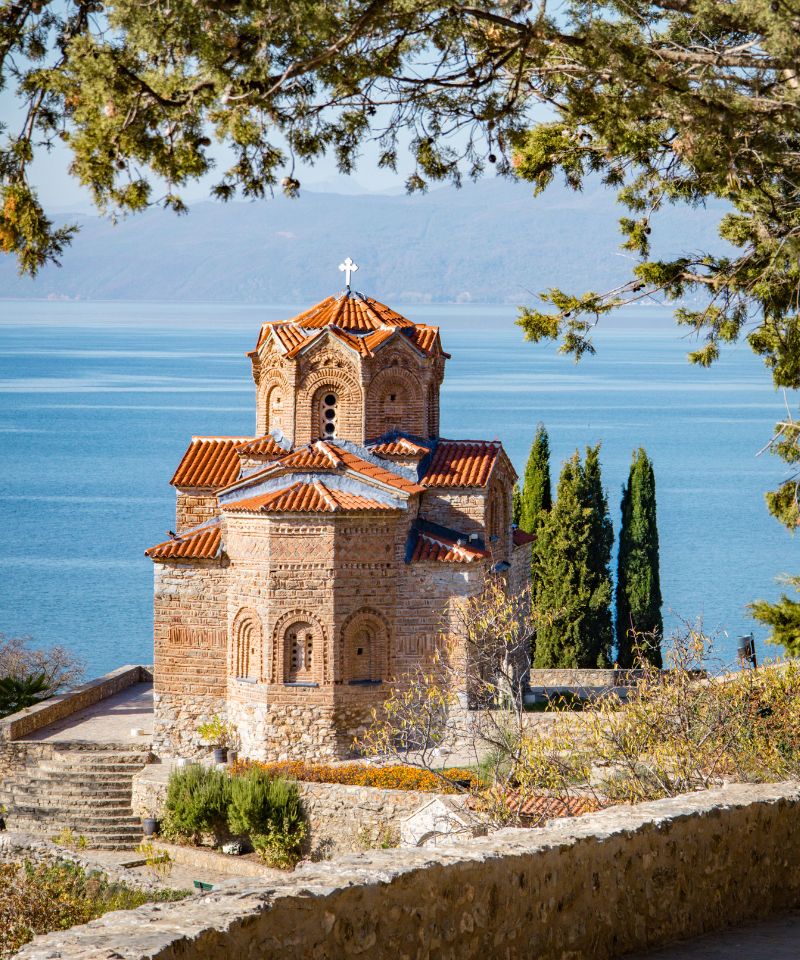
Ohrid Lake:
Recognized as a UNESCO World Heritage site, Lake Ohrid is one of the oldest and deepest lakes in Europe, known for its clear waters and biodiversity.
The lake is a popular spot for swimming, boating, and fishing.
The surrounding area, with its beaches and resorts, is a perfect place for relaxation and enjoying the natural beauty.
Samuil’s Fortress:
Standing on a hill above Ohrid, the fortress dates back to the 10th century and was the capital of the First Bulgarian Empire during the reign of Tsar Samuil.
Today, visitors can explore the remnants of the fortress and enjoy stunning views of Lake Ohrid and the surrounding mountains.
Church of St. John at Kaneo:
This iconic church, perched on a cliff overlooking Lake Ohrid, is one of the most photographed spots in Macedonia.
Built in the 13th century, its architecture and location make it a unique historical and spiritual site.
The views of the lake at sunset are particularly breathtaking.
Ancient Theatre of Ohrid:
The Ancient Theatre, dating back to Hellenistic times (3rd century BC), was once used for performances and gladiatorial games.
Rediscovered in the 20th century, it is now a venue for concerts and festivals, connecting visitors with the city’s ancient past.
Saint Panteleimon Monastery:
Located on Plaošnik, this monastery is believed to have been built by Saint Clement of Ohrid on the foundations of an older church.
The site is significant for its early Christian architecture and its role in the spread of Christianity in the region.
The monastery’s frescoes and its tranquil setting make it a must-visit for history and architecture enthusiasts.
Each town in Macedonia offers a unique blend of natural beauty, historical significance, and cultural richness, making them worthy of exploration for any traveler.
Let’s continue with Bitola, Prilep, Kumanovo, and Struga in the next response.
Continuing our exploration of the major towns in Macedonia and their notable attractions:
Bitola
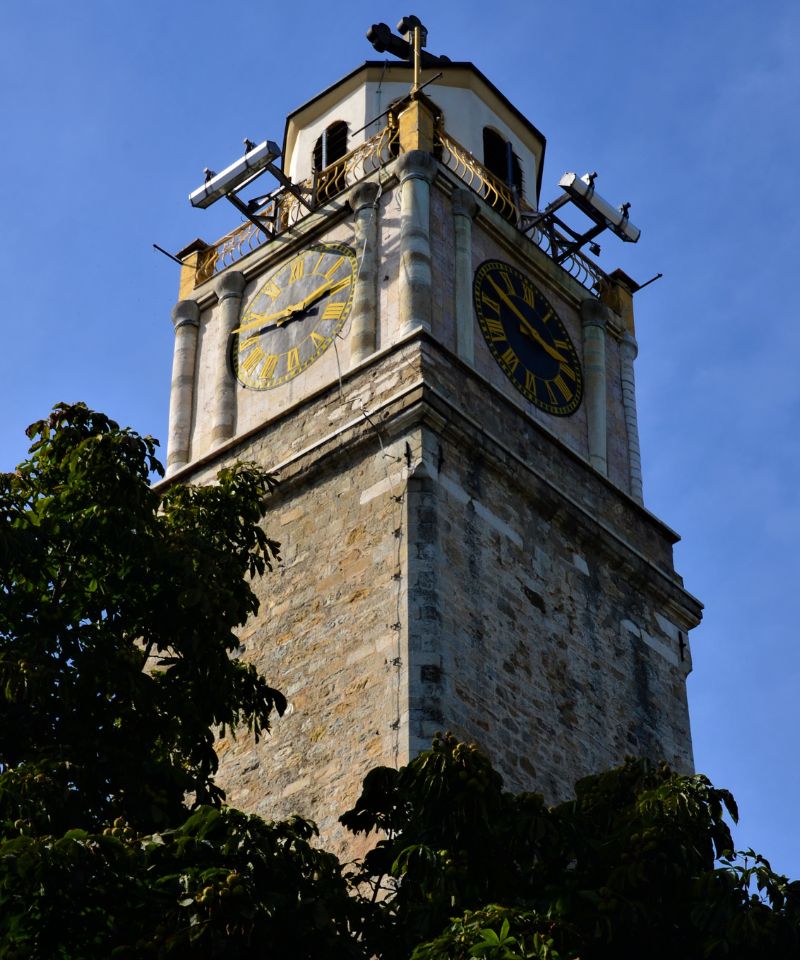
Heraclea Lyncestis:
This ancient city was founded by Philip II of Macedon in the middle of the 4th century BC.
It flourished during Roman and early Christian times, as evidenced by its well-preserved ruins, including a Roman theater, baths, and beautiful early Christian basilicas with stunning floor mosaics.
Visiting Heraclea Lyncestis offers a deep dive into the ancient history of the region and the chance to walk through archaeological sites that tell the story of a bygone era.
Shirok Sokak Street:
Bitola’s main pedestrian thoroughfare is known for its lively atmosphere and beautiful architecture.
Lined with neoclassical buildings, cafes, and shops, Shirok Sokak is the heart of Bitola’s social life.
This street is an ideal place to experience the local culture, enjoy a coffee or meal, and observe the blend of traditional and modern lifestyles.
Bitola Museum:
Housed in the former military academy where Mustafa Kemal Atatürk, the founder of modern Turkey, received his education, the museum offers insights into Bitola’s historical importance.
It showcases exhibits from the region’s past, including artifacts from the ancient city of Heraclea Lyncestis, the Ottoman period, and the Balkan Wars.
Pelister National Park:
This park is famous for its biodiversity, including the rare Molika pine, glacial lakes known as Pelister Eyes, and rich animal life.
Pelister also offers numerous trails for hiking and mountain biking, making it a perfect destination for nature lovers and adventure seekers.
The park’s high peaks and beautiful landscapes provide an excellent backdrop for outdoor activities.
Prilep
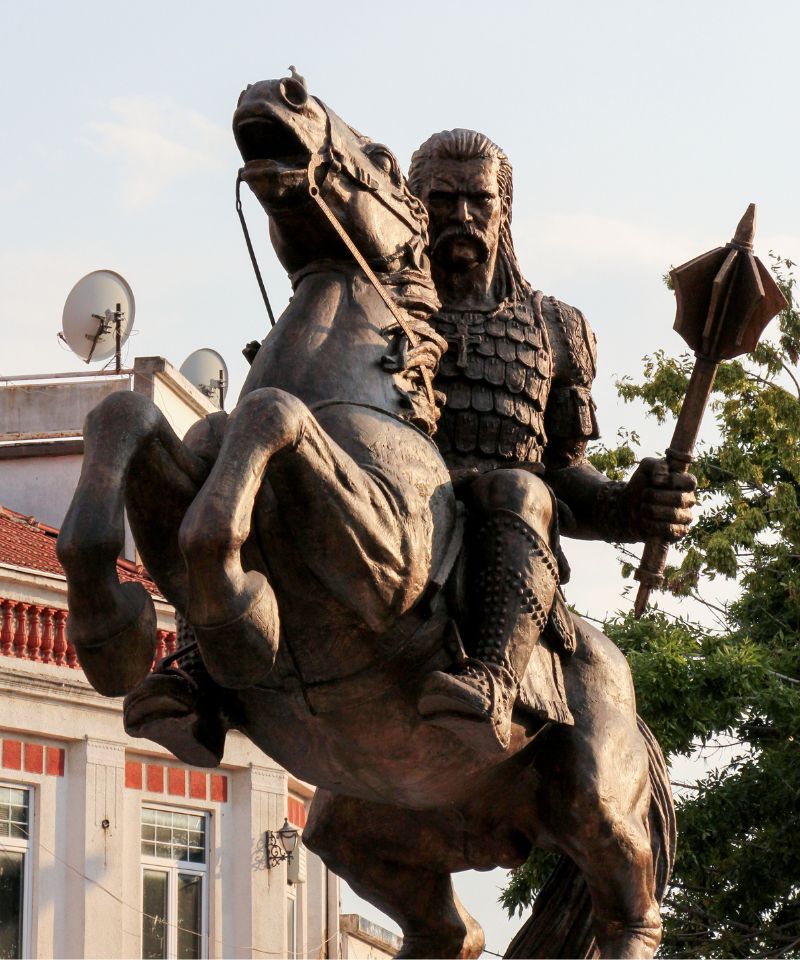
Marko’s Towers (Markovi Kuli):
This fortress, located on a high rocky outcrop above Prilep, offers panoramic views of the surrounding area.
The ruins hold historical significance, as they are associated with the medieval Serbian prince, King Marko.
The site is an excellent spot for hiking and exploring the remains of towers and fortifications, providing a glimpse into the medieval history of Macedonia.
Treskavec Monastery:
Situated atop a mountain, the monastery is reachable by a scenic hike and is known for its peace and tranquility.
Dating back to the 12th century, it houses important Byzantine frescoes and offers breathtaking views of the surrounding landscape.
The journey to Treskavec is as rewarding as the destination, with natural beauty and serenity accompanying visitors along the way.
Prilep’s Old Bazaar:
Reflecting the city’s Ottoman heritage, the Old Bazaar is a charming area with narrow streets, old buildings, and small shops selling traditional crafts and products.
The bazaar is a place where history and modern life converge, offering a glimpse into the daily lives of the people of Prilep.
Kumanovo
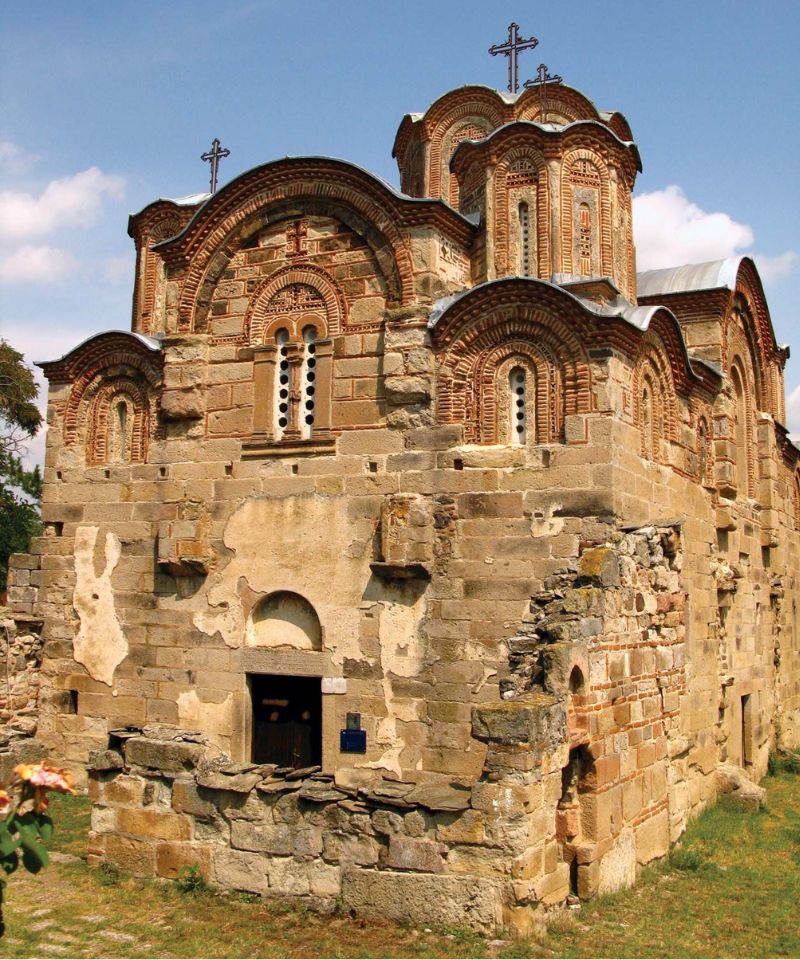
Kumanovo Old Town:
The old town of Kumanovo showcases a mix of architectural styles, from Ottoman to traditional Balkan, reflecting the city’s rich history and cultural diversity.
Visitors can explore its narrow streets, visit local markets, and enjoy the vibrant atmosphere that characterizes this part of the city.
Memorial House of Hristijan Todorovski Karpoš:
This museum is dedicated to a national hero and offers insights into the struggle for Macedonian independence.
It presents a collection of personal items, documents, and exhibits tell the story of Macedonia’s fight for nationhood.
Elenica Mountain Park:
A natural escape offering stunning landscapes, hiking trails, and picnic areas.
It’s an ideal spot for those looking to immerse themselves in nature, with opportunities for bird watching, photography, and simply enjoying the serene environment.
Struga
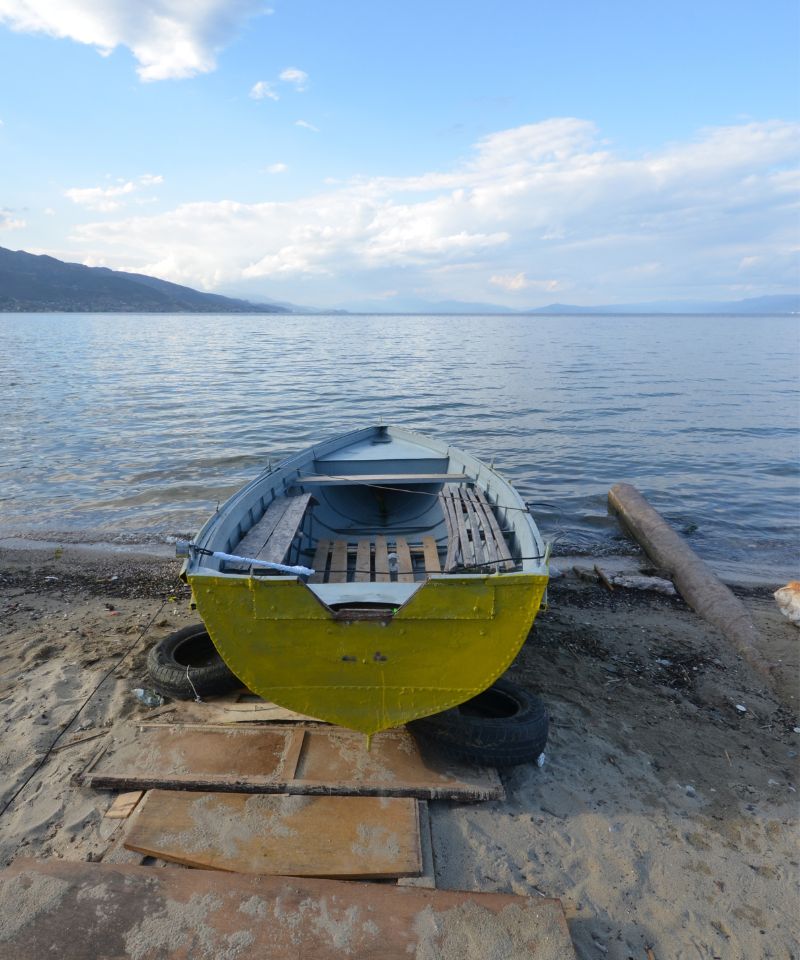
Drilon Springs:
Located near Struga, these springs are a picturesque site where clear, cold water flows into Lake Ohrid.
The area around the springs is a peaceful retreat, perfect for nature walks, picnics, and boat rides.
Vevčani Springs:
A natural monument and a source of the Vevčani River, these springs are known for their beauty and the quaint village of Vevčani that surrounds them.
The area is a testament to the natural beauty of Macedonia and offers trails and spots for relaxation.
River Crn Drim:
This river flows out of Lake Ohrid at Struga and provides a beautiful setting for walks and experiencing local life.
The riverside is lined with cafes and restaurants where visitors can enjoy the view and the sound of flowing water.
Exploring these towns and their attractions provides a comprehensive view of Macedonia’s rich heritage, stunning natural landscapes, and vibrant cultures.
Each destination has its unique charm, offering insights into the past and present of this fascinating Balkan country.
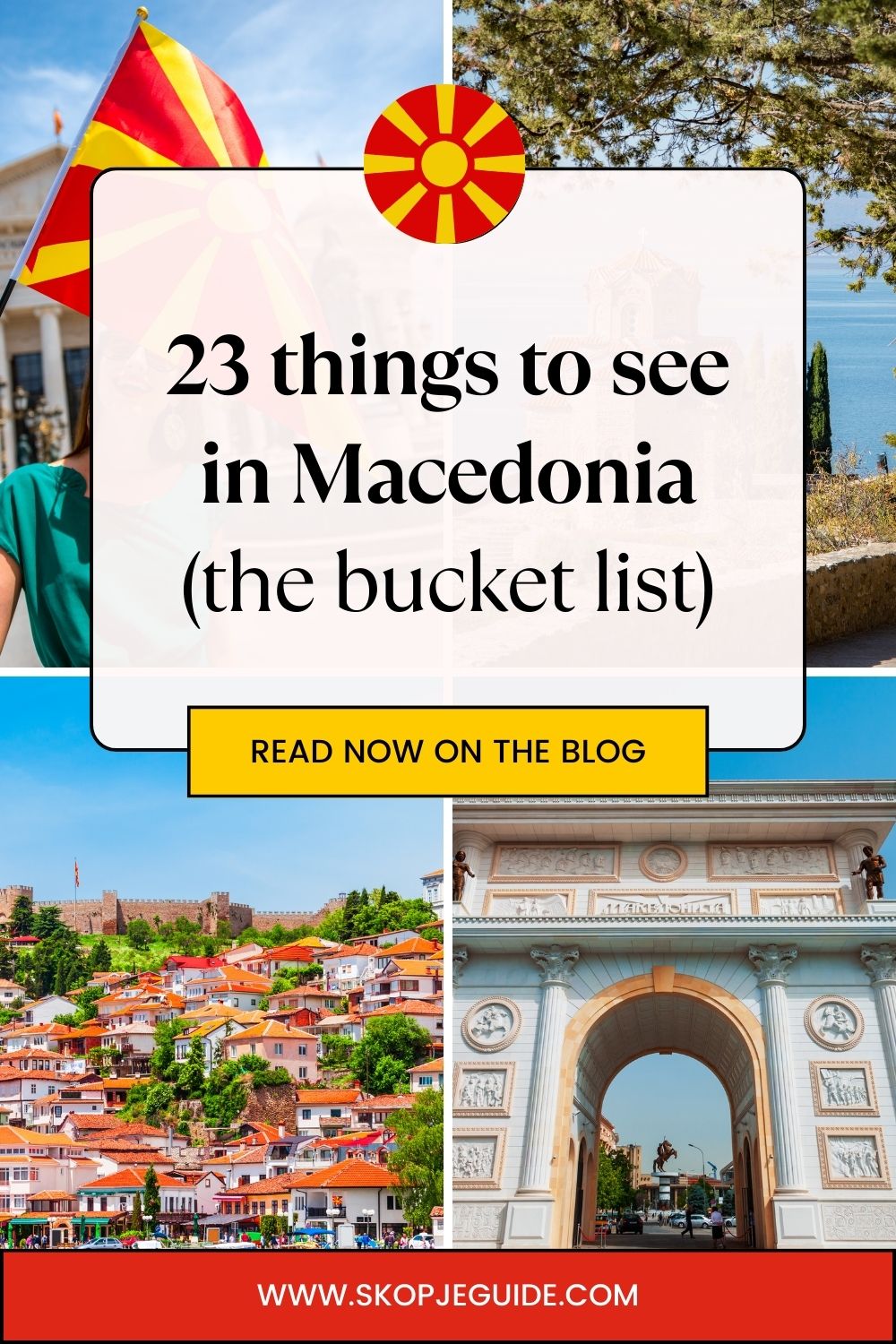
This guide was first published on March 9, 2024 and was last updated on March 14, 2024. For more information, please contact us at contact@skopjeguide.com.